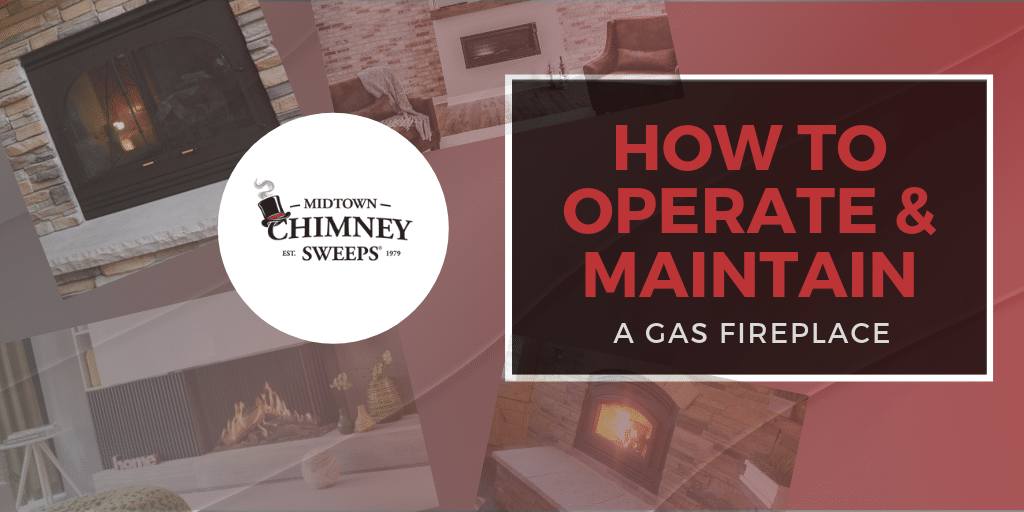A gas fireplace is always an excellent addition to any living space as it is comfortable, convenient, and isn’t as messy compared to a conventional wood-burning unit. However, most homeowners rarely think of maintaining, inspecting, or cleaning their gas fireplace until they notice that something is wrong or if the unit malfunctions. Whether you take some time to check your unit out or schedule an appointment with a certified technician, maintaining your gas fireplace ultimately saves you time and money.
Neglected gas fireplaces could develop a number of costly and potentially dangerous problems. In this post, we point out common gas fireplace problems, maintenance tips, and how you can clean your unit.
Common gas fireplace problems
The aesthetic appeal and convenience of gas fireplaces are hard to beat. While gas fireplaces require little maintenance, you may encounter some of these problems every once in a while.
No ignition
If your unit’s pilot light is working, but the burner is not igniting but you do not smell any gas:
Check whether the thermostat is turned on and that the room temperature is lower than the thermostat’s setting.
This could also be a result of a closed gas valve. Most modern gas fireplaces are made in such a way that the handle of an open gas valve is in line with the unit’s piping. If they are not aligned, the gas valve is closed.
The lack of ignition or if your burner is sluggish, this may be as a result of a faulty or malfunctioned thermopile which works in the same way as a car engine’s spark plug. The thermopile may be incapable of producing the ignition spark due to loose or damaged wiring.
In older units, the problem may be as a result of an incorrectly placed or a failed thermocouple. This is a metal rod between the gas valve and the pilot flame.
Strange noises
While it is not unusual for your unit to produce some noise while it’s working, you should be alarmed by:-
- Rumbling noises – this normally happens when the burner is dirty.
- Roaring sound – this be easily remedied by adjusting the flame.
- Shrieking or grinding noises – this is common in units that have a blower or a fan. It means that the blower or fan is due for replacement or there are loose components.
Unusual Odors
This is usually a source of panic for most homeowners. However, you should not get alarmed if the smell is not similar to that of sulfur. Some of the most common causes of strange odors or smells from your unit include:
- Dust, dirt, and pet dander could get into the internal components of your unit. This is common in ventless systems
- Glass doors that are not sealed properly could allow odors to escape into the atmosphere. Ensure that any glass fasteners and clips are firmly secured in place.
- Objects placed near the unit or on the mantelpiece may emit odors when they are heated. If you suspect they might be the cause, remove them one at a time to identify which one is producing the smell.
If you suspect that the gas is leaking or if you smell burning wires, shut off the unit, vent the house, and contact a professional immediately.
Pilot light failure
A strong draft could blow the power light out. This can be prevented by securing the vent cap firmly and following the manufacturer’s instructions to relight. Replace or repair the vent cap if it is broken. If the power light still refuses to turn on, the thermopile or its wiring could be damaged, in which case you should contact a technician.
Dirty or chipped glass doors
Your unit’s glass door may develop a cloudy haze due to continued use. You can easily remedy this using a cleaner made specifically for the glass door.
Soot buildup
Soot buildup is usually an airflow problem. Follow the manufacturer’s instructions to decrease the gas flow and increase oxygen flow. You may notice a change in the flame to a bluish tint, but it effectively takes care of the soot problem.
How should I schedule my gas fireplace maintenance schedule?
As a homeowner, you will want to maximize your unit’s service life as well as ensure its safe use. You can only achieve this through regular inspection, cleaning, and maintenance.
Ideally, a gas fireplace system should be inspected annually for general wear and tear and performance every year by yourself or a licensed technician. During the inspection, all internal components, including the gas lines, gas logs, firebox, vents, and so on, are checked. The unit’s exterior is also inspected to ensure that the framework holds up well. The glass door is checked for signs of cracking or chipping.
A technician is better placed to identify and potential problems. By engaging a professional chimney company, you can have your unit inspected and cleaned at the same time. A qualified technician will also check to see whether your carbon monoxide detectors are in good working condition.
How to clean your gas fireplace
While it is obvious that a wood-burning fireplace needs regular cleaning due to soot and creosote buildup, this is not the case with gas fireplaces due to the absence of smoke. However, one of the biggest gas fireplace maintenance issues is cleaning it.
Not all gas fireplaces are the same as some are yellow-flamed, while others have a blue flame. Some are vented, while others are not. Whichever gas fireplace you own, keeping it clean ensures that it runs optimally and maintains its aesthetic appeal.
Follow the steps below when cleaning your gas fireplace:
- Check to make sure that the gas valve is off and that all components in your unit are cool.
- If the glass front is attached to your unit with hinges, you will need to clean it while it’s still attached to the unit. If not, remove it and set it on a soft surface such as a carpet or a towel. Wipe it gently but firmly using a soft cloth sprayed with the recommended cleaner. Use a cook-top cleanser or a fireplace cleanser to clean away any stubborn stains or soot spots. Rinse away the cleaner residue with a damp cloth. Dry the glass front using paper towels to prevent the formation of streaks.
- Check the control area as well as the burner for debris or dust and use a wand attachment to suction away the dirt or a wet rag to wipe the surface down. If your fireplace has lava rocks which the vacuum cleaner could suction, cover the hose’s opening with a cheesecloth secured with a rubber band.
- Check your unit’s gas logs for discoloration or soot buildup. If you notice such, follow the manufacturer’s instruction to detach the logs and use a soft-bristled brush or a paintbrush to remove the soot. Never wash or wipe the logs with a damp cloth as you could damage its finish. Should you notice visible signs of damage or corrosion, contact your technician who will advise you whether they can be repaired or they need to be replaced. Vent-free gas logs should only be cleaned or moved by a qualified technician as doing, so yourself exposes you to safety risks.
- Using a clean, damp cloth wipe down your unit’s exterior. Avoid exposing any marble, gold, brass, and other decorative materials and plates to corrosive or abrasive cleaners. With a regular cleaning schedule, such parts will clean quite well with plain water.
- Replace your unit’s glass door and wait at for least 30 minutes before using the fireplace. This gives any cleaning residue sufficient time to evaporate, thus preventing fire hazards.
Safety tips
Ensure that the pilot light and gas valve is turned off before proceeding with the cleaning. The fireplace should also be cool to room temperature. Follow the manufacturer’s instructions and recommendations when cleaning your unit.
The bottom line
All gas-fueled appliances, including water heaters, burners, and gas fireplaces do not produce visible soot as other fuels do. However, they still deposit corrosive substances on your chimney. Lack of regular gas fireplace and chimney inspection could lead to costly repairs and in the worst-case scenario, fire hazards. Due to the potentially dangerous nature of gas-powered systems, we recommend contacting a professional if you are unsure of how to proceed with the unit’s inspection, cleaning, and maintenance.
